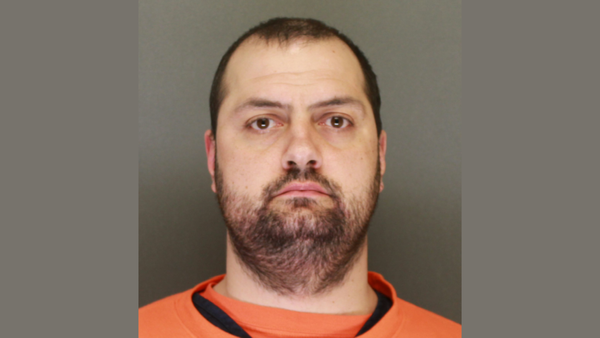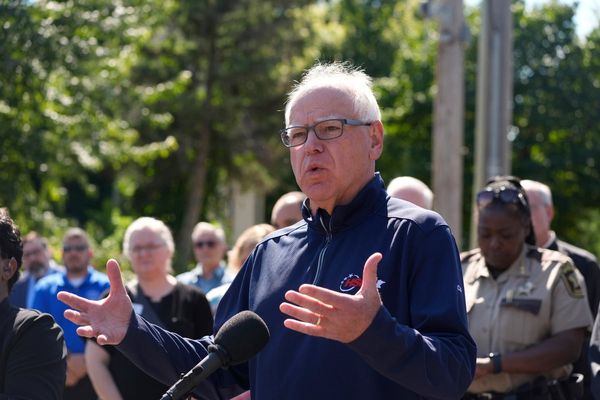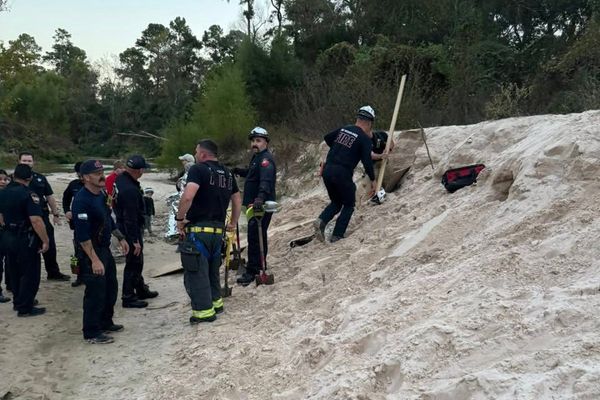
The Victorian budget, in the words of the treasurer, Jaclyn Symes, was all about “what matters most”: big spending on free trains, trams and buses for “every kid, everywhere”; billions more for hospitals; and a $5bn “public transport blitz”.
Here are the 2025 budget winners and losers:
Victorian budget winners
Families with school kids (and their grandparents)
If you’re Victorian and under 18, then from 2026 a new $5 youth Myki card will be your ticket to ride public transport – for free.
In the 2025-26 budget there’s $318m over four years so that every kid in Victoria – more than 1 million of them, the government says – will no longer have to pay when they catch a bus, tram or train.
The policy will save parents up to $755 per child in annual public travel costs. And the free travel will be for children from all families, not just those on lower incomes.
(There’s also free public transport on the weekend for seniors.)
There’s $400 for eligible children to help pay for camps, sports and excursion, an increase from the previous $154 for primary school kids, and $256 for high school students.
There are more than 65,000 Get Active Kids vouchers for concession card holders.
There’s an extra $1.5bn to expand existing schools and build new ones.
Lower income Victorian households will also get $100 towards off their energy bills.
Health
The Allan government has committed an extra $11.1bn to health, including $9.3bn boost for hospital funding. There’s $634m to open and “operationalise” nine new or upgraded hospitals right across Victoria, including opening the Footscray hospital and community hospitals for Craigieburn, Cranbourne and Phillip Island.
Included in the total additional funding, is $84m for paramedics and $58m to help emergency departments see patients sooner.
A trial plan allowing pharmacists to offer a wider range of service – such as the resupply of contraceptive pills and treatment of urinary tract infections without the need for a doctor’s script – will be made permanent and expanded.
Pharmacists will now be able to prescribe medicines for other ailments, including allergies and high blood pressure.
Commuters
There’s an almost $5bn public transport blitz, including $727m to “switch on” Melbourne’s Metro Tunnel, which is due to open by the end of the year.
The budget also includes $98.7m to boost service frequency across seven metropolitan and regional train lines.
The biggest spending item is the $4.1bn to begin major works at Sunshine station, which the Melbourne airport rail line will eventually travel through.
But don’t expect to be travelling using your credit card – the budget shows an upgrade of the troubled Myki system to allow for payment using your smartphone will cost an extra $136.76m and is running 18 months late.
There’s also nearly $1bn in a “better road blitz” to fix potholes and surfaces in 2025-26 alone.
Businesses
After being slugged with taxes, the treasurer made a point of saying there would be no new imposts on businesses, who have complained that they are copping the brunt of budget repair.
This budget is distinctly more corporate sector-friendly, with hundreds of millions of dollars over four years to “help new businesses find new opportunities to expand and attract investment”. That includes mentoring and services to boost the capacity of small businesses and exporters.
There’s a $150m Victorian Investment Fund, a third of which will be dedicated to the regions, and $4m to help boost the capacity and skills of entrepreneurs.
The budget also includes $240m to fund the government’s economic growth statement, which includes measures to cut red tape and ease the regulatory burden on firms, and help train up workers.
Victorian budget losers
The public service
The treasurer, Jaclyn Symes, announced the budget assumes 1,200 fewer full-time public servants, with the potential for that number to push towards 3,000 people once the government’s review of the bureaucracy is completed by 30 June.
Symes said that doesn’t necessarily involve thousands of redundancies, as departments have already been trimming head counts by not replacing workers as they go.
The job reductions are not supposed to come from frontline services.
Would-be homeowners
The premier, Jacinta Allan, in October said she would be the leader “who got millennials into homes”. But there’s no new, grand vision in this budget to address one of the country’s major intergenerational issues – unaffordable housing.
That’s not to say there’s nothing: there’s an extra $249m – in partnership with the commonwealth – to pay for the infrastructure, like roads, sewerage and water, that the government says will facilitate an extra 4,000 homes over four years.
The stamp duty concession for off-the-plan homes will be extended to October 2026, and eligibility will be expanded beyond first home buyers and owner occupiers in a move aimed to boosting construction of new properties.
Still, the 800,000 new homes by 2034 target does not look meaningfully closer.
Budget boffins
The country’s self-appointed guardians of fiscal rectitude will find little to love in Victoria’s 2025-26 budget, as the new treasurer pushed back fiscal repair to the never-never.
Despite achieving the first “operating surplus” since the Covid lockdowns – a skinny $600m in 2025-26. But after accounting for infrastructure spending, the cash bottomline is $12.2bn in the red in the next financial year, with deficits as far as the eye can see.
The “tough and difficult” fiscal measures under previous treasurer Tim Pallas have transformed into a big spending budget. The extra nearly $3bn in GST and commonwealth grants since the December budget update has been more than spent.
The government says it will keep net debt as a share of the Victorian government from going beyond its 25% target, and that’s what the forecasts show. But lowering the burden is a job that has surely been pushed beyond the next election, due in November 2026.
Meanwhile, actual net debt levels continue to climb, at a faster pace than predicted in December, from an estimated $155.5bn by the middle of this year, to $194bn by June 2029.







